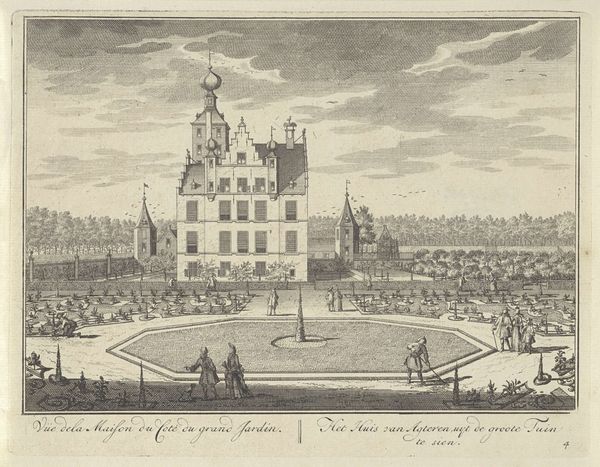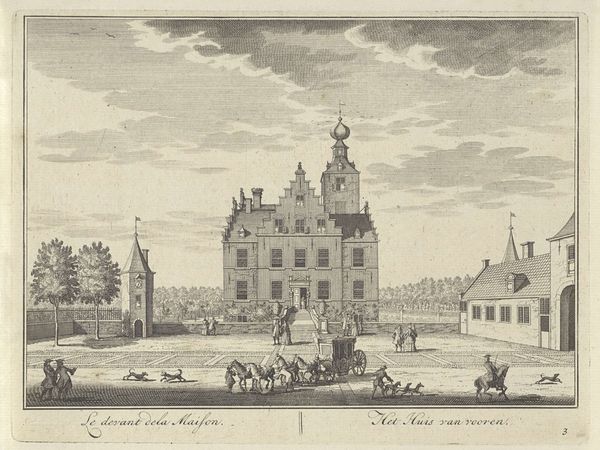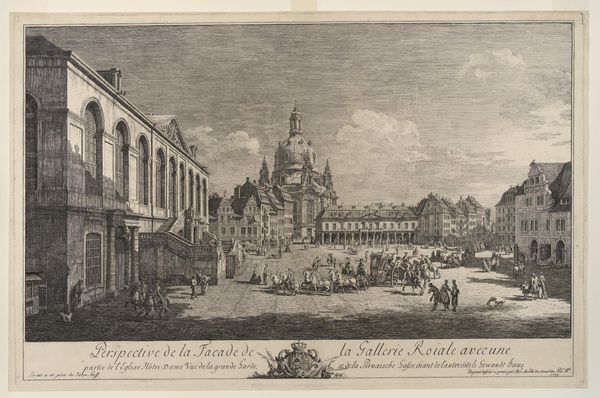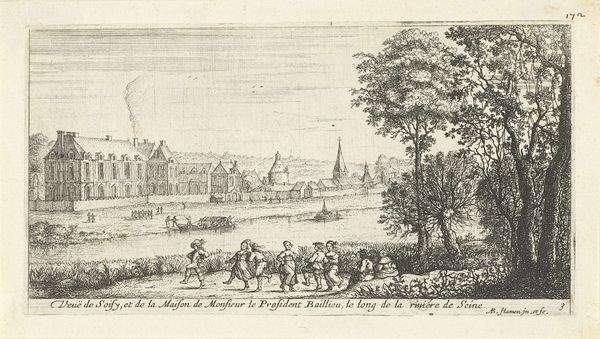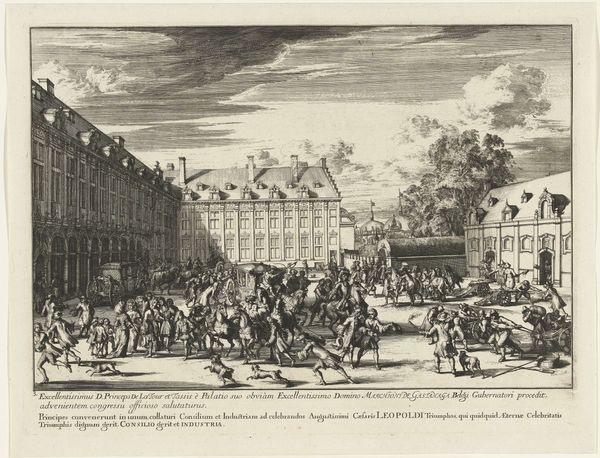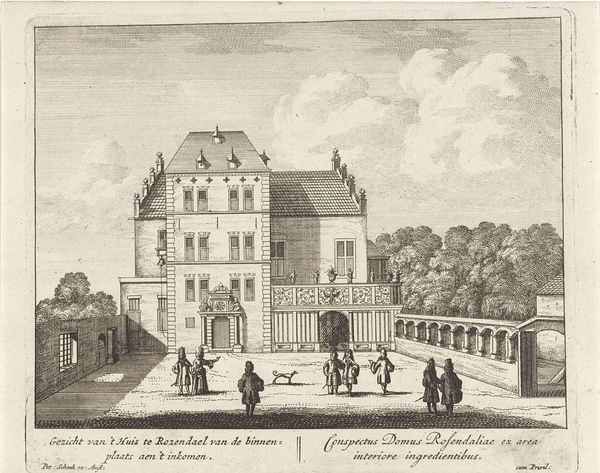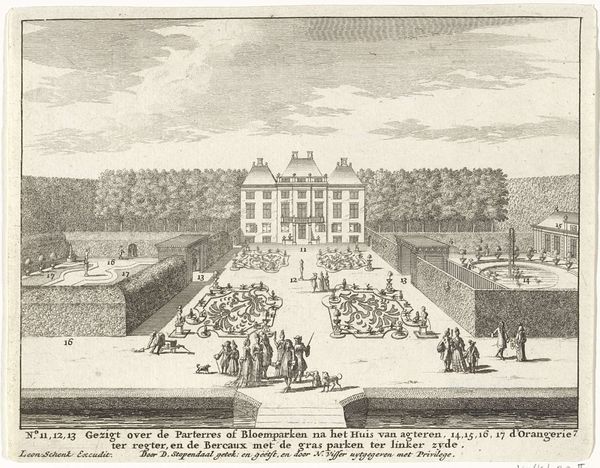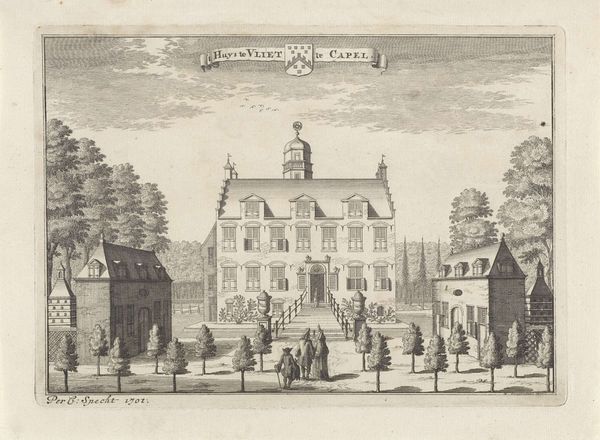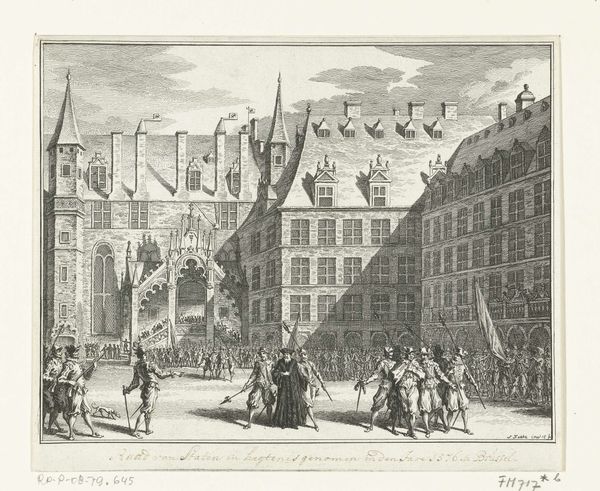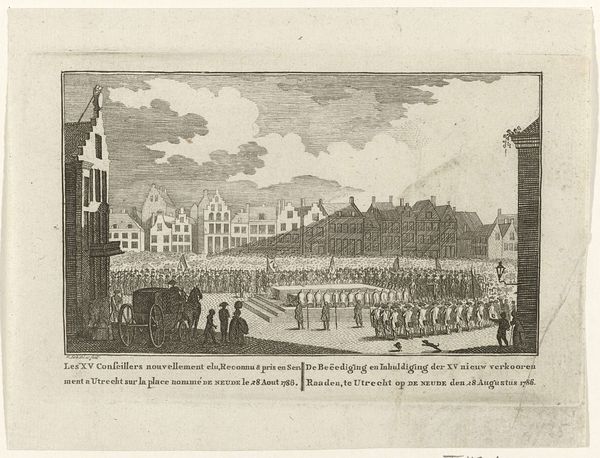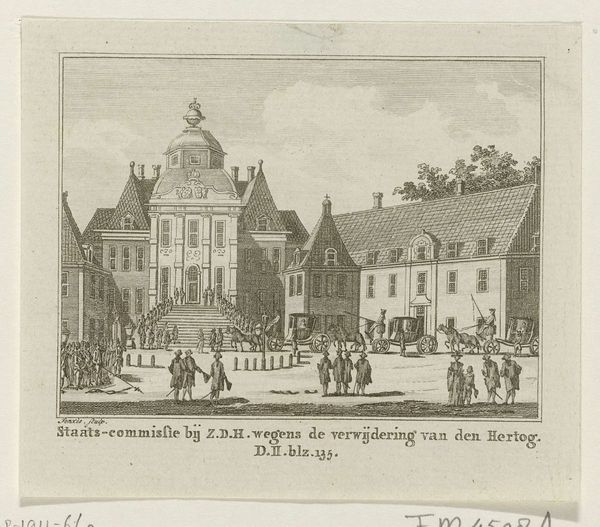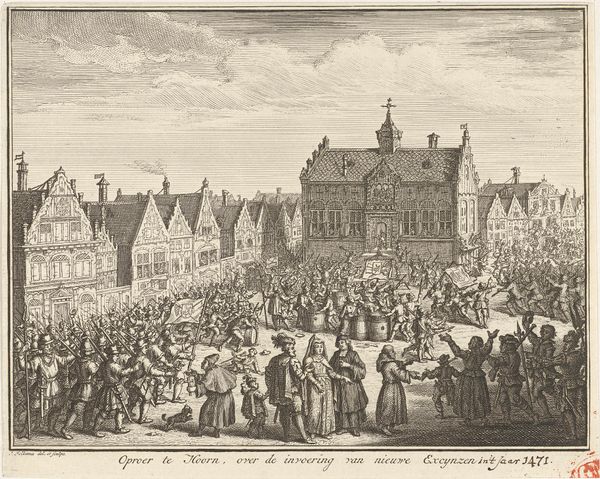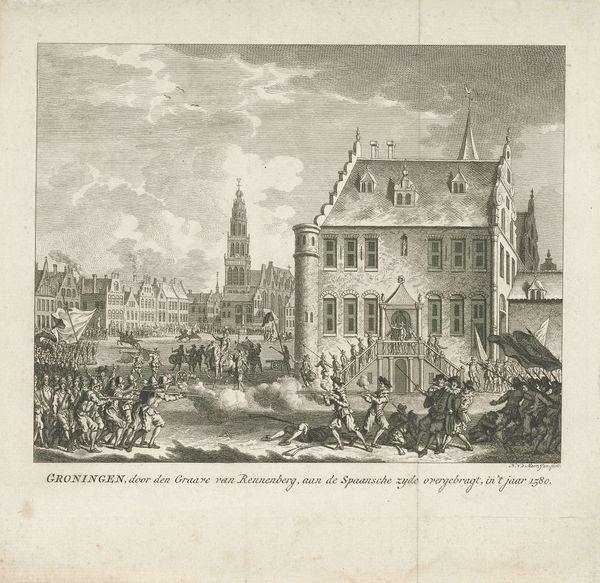
engraving, architecture
#
baroque
#
dutch-golden-age
#
old engraving style
#
landscape
#
engraving
#
architecture
Dimensions: height 163 mm, width 210 mm
Copyright: Rijks Museum: Open Domain
Curator: Looking at this print, titled "Side View of Zuilenstein Castle", created sometime between 1682 and 1726 by Daniël Stopendaal, currently residing at the Rijksmuseum, what is your first impression? Editor: I'm immediately struck by the formal, almost rigid feel. It’s very ordered. The symmetry, the clear lines... it feels very… planned. Almost oppressive. Curator: I understand. This print serves as a valuable record of the built environment and its function in Dutch society. The Baroque style, typical for its time, embodies power and control, reflecting the social hierarchy. Consider Zuilenstein Castle’s history; it belonged to a high-ranking nobleman. How do the grounds in this print portray the castle as a social institution? Editor: Right, and there it is – the deliberate sculpting of nature reflects this elite control. I am not really a fan, because it lacks spontaneity; look how tightly regimented every bush and tree are. I suppose it emphasizes the owners' power. Did this artist deliberately show off their grip on not only nature, but also everyone else around them? Curator: Very likely. The artist, by meticulously capturing every detail of the architectural form and the planned gardens, perpetuates a specific ideal and communicates the patron's intended message to its viewers. We see how power literally materializes through ownership and meticulous organization of space. Consider too, how Dutch Golden Age engraving, though seemingly "objective," functioned to celebrate and reinforce these power structures. Editor: Absolutely, these controlled environments also implicitly excluded people from those who had the permission to enjoy it. And with all these precise lines achieved through the process of engraving it seems intended for the elite, designed for specific viewing habits by only privileged people. Curator: It reveals how artistic styles of Dutch Golden Age landscape portray a certain relationship between land, ownership, and social power. Editor: Reflecting on this engraving, I still see the tension between control and what, in its essence, represents living spaces and community interactions, with significant implications on political and economic privilege, back then as well as now. Curator: This has given me a new understanding of Dutch Golden Age landscaping aesthetics!
Comments
No comments
Be the first to comment and join the conversation on the ultimate creative platform.
